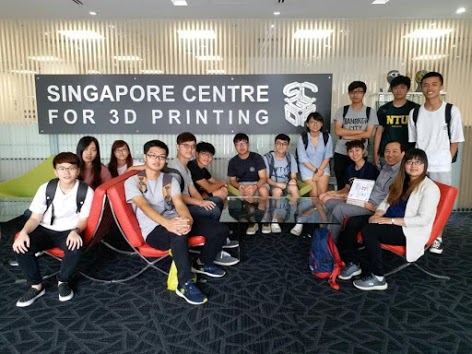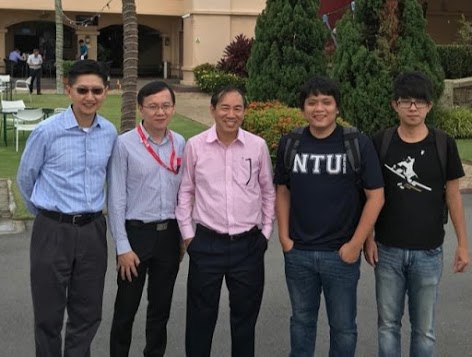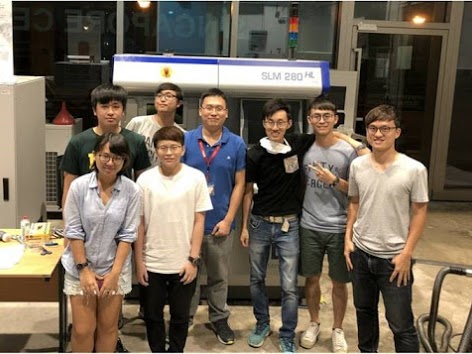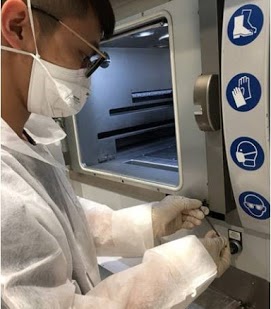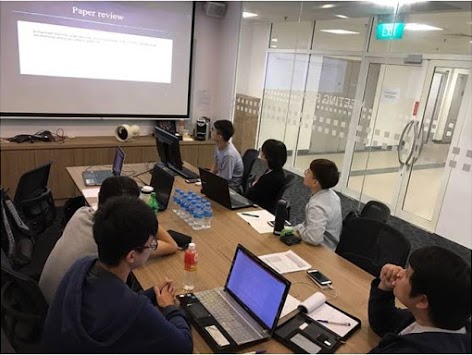In the summer vacation of this year, Teacher Guo Zhenan and Teacher Shen Yufang led a total of 12 students from the department to Nanyang Technological University in Singapore for 3D printing-related exchange research internships and summer training courses for a month.
Hu Ruomei, director of the Department of Medical Sciences of Asia University, pointed out that the Singapore Centre for 3D Printing of Singapore ’s Nanyang Technological University has been heavily subsidized by the Singapore government to develop 3D printing in aerospace, construction, medical and biomedical fields. The pioneers and leaders in the printing industry have conducted in-depth research on the printing technology of materials such as biology, metals, ceramics, and polymers. Taking the field of metal printing as an example, the 3D printing center of Nanyang Technological University builds the most widely used PBF (Powder Bed Fusion) technology related equipment in metal 3D printing technology. According to the different energy sources, SLM (Selective Laser) is built. Melting) technology and Electron Beam Melting (EBM) technology, research and development of a variety of metal materials.
Prof. Chua, Chee-Kai (Nanyang Technological University of Singapore) was in charge of the exchange research internship and summer training courses at Nanyang Technological University in Singapore. Prof. Caizhi Cai has been the director of 3D Printing Center of Nanyang Technological University in Singapore since 1990 He has been engaged in 3D printing-related research for more than 200 years and has published more than 200 international journal papers. He has accumulated more than 4,600 citations and an H index of 33. He is an internationally renowned scholar who has cultivated in the field of 3D printing for many years.
It is worth mentioning that Professor Caizhi Kai has accumulated more than S $ 15 billion in research funding and established 5 large-scale research centers and laboratories. Currently, 3D printing center of Nanyang Technological University in Singapore leads 36 professors, 47 doctoral students, 52 master Students and 15 researchers carry out technical development of 3D printing materials, equipment, software, and design. The application level is widely used in aerospace, medical, and vehicle fields.
Of the 12 students in the Department of Biomedicine who went to the internship this time, a total of 5 students received the school's highlight program scholarship after being evaluated by the school and were recommended to attend the 3D Printing Summer Training Course at the 3D Printing Center of Nanyang Technological University in Singapore; the remaining 7 With the support of the Ministry of Education's "Sea-building Dream New Southbound" project, students went to the 3D Printing Center of Nanyang Technological University in Singapore to conduct 3D printing related research with researchers in Professor Tsai's laboratory, and according to Guo Zhenan and Shen Yufang Research areas include "parameter test of medical innovative metal materials" and "development of biomimetic vascular printing technology".
The students who participated in the research internship abroad before this time went to the Central Asian General Assembly 3D Printing Medical R & D Center for metal 3D printing, bioprinting and related analysis equipment training, and followed the research materials and related topics. Training students on literature collection, briefing production, oral English reports, and English report writing. In addition to strengthening students' basic knowledge in this field of study, they also enable students to better understand how to cooperate with foreign researchers in research.
During the internship, in addition to joint experiments with researchers at Nanyang Technological University's 3D Printing Center, students also used weekends to organize data and meet with relevant researchers to report weekly goals, progress, and monthly research and development. After the internship, research goals such as 3D printing parameter testing of medical innovative metal material parameters and development of bionic 3D printing blood vessels were achieved.

 亞洲大學3D列印研究中心
亞洲大學3D列印研究中心
